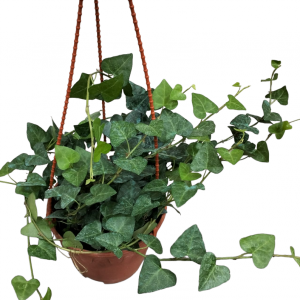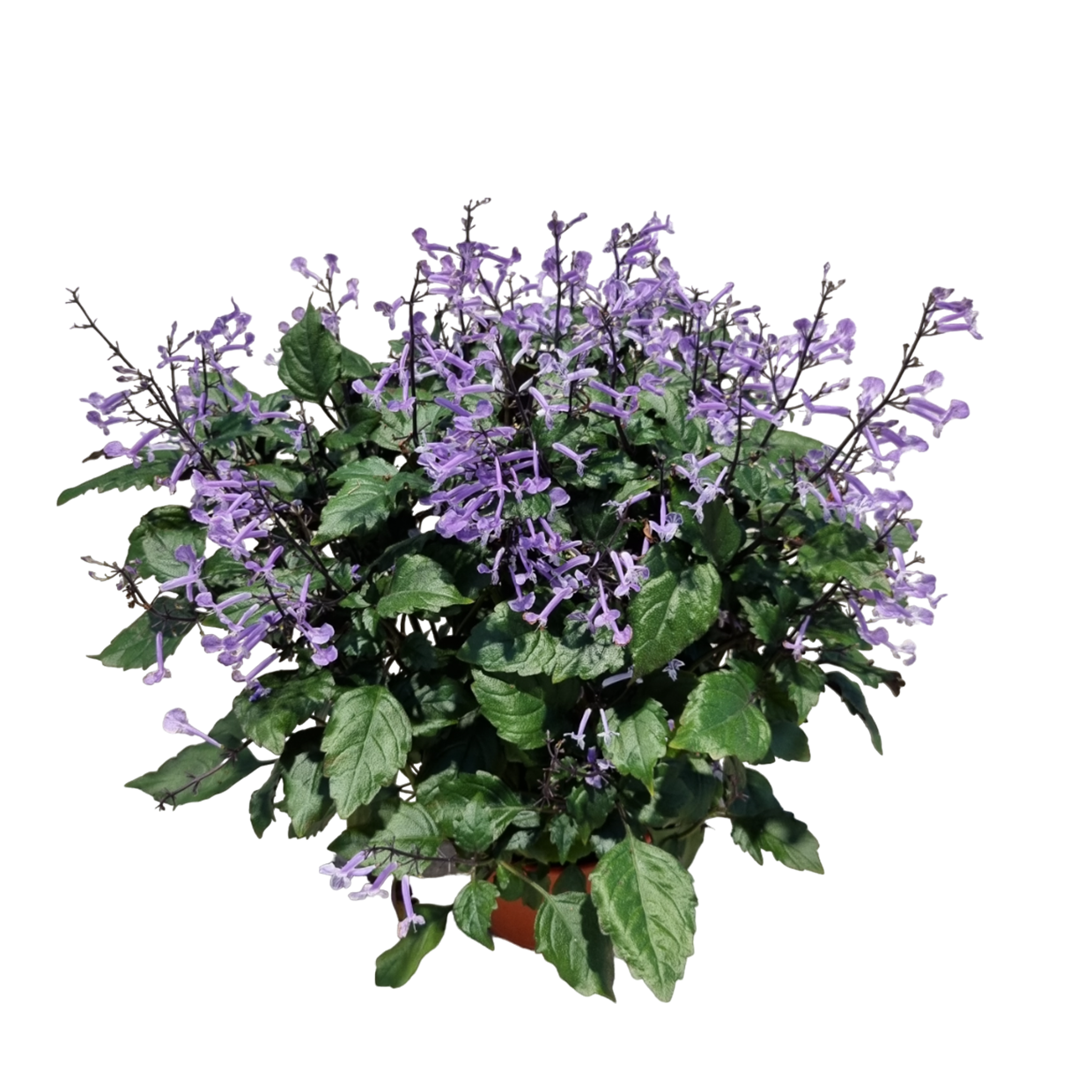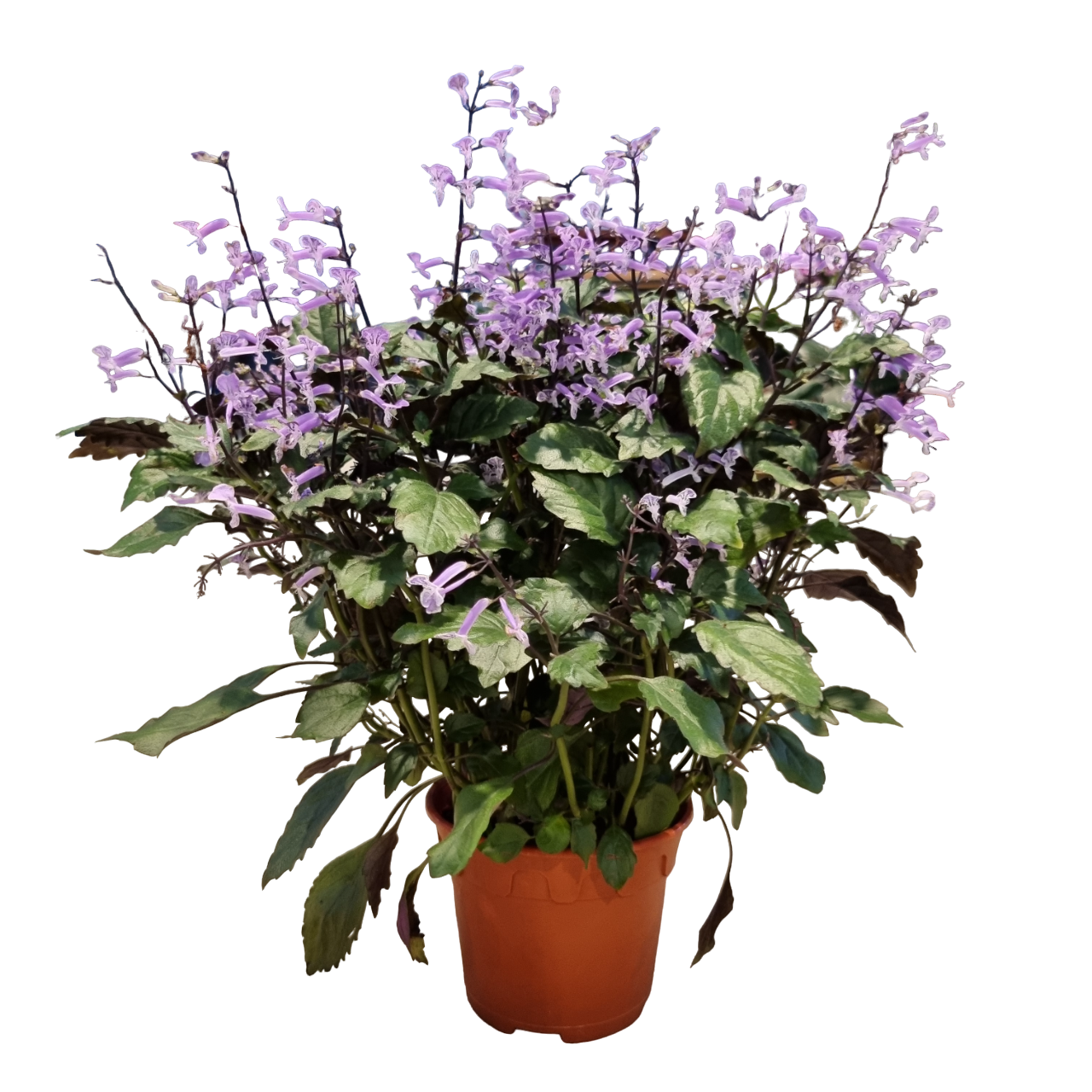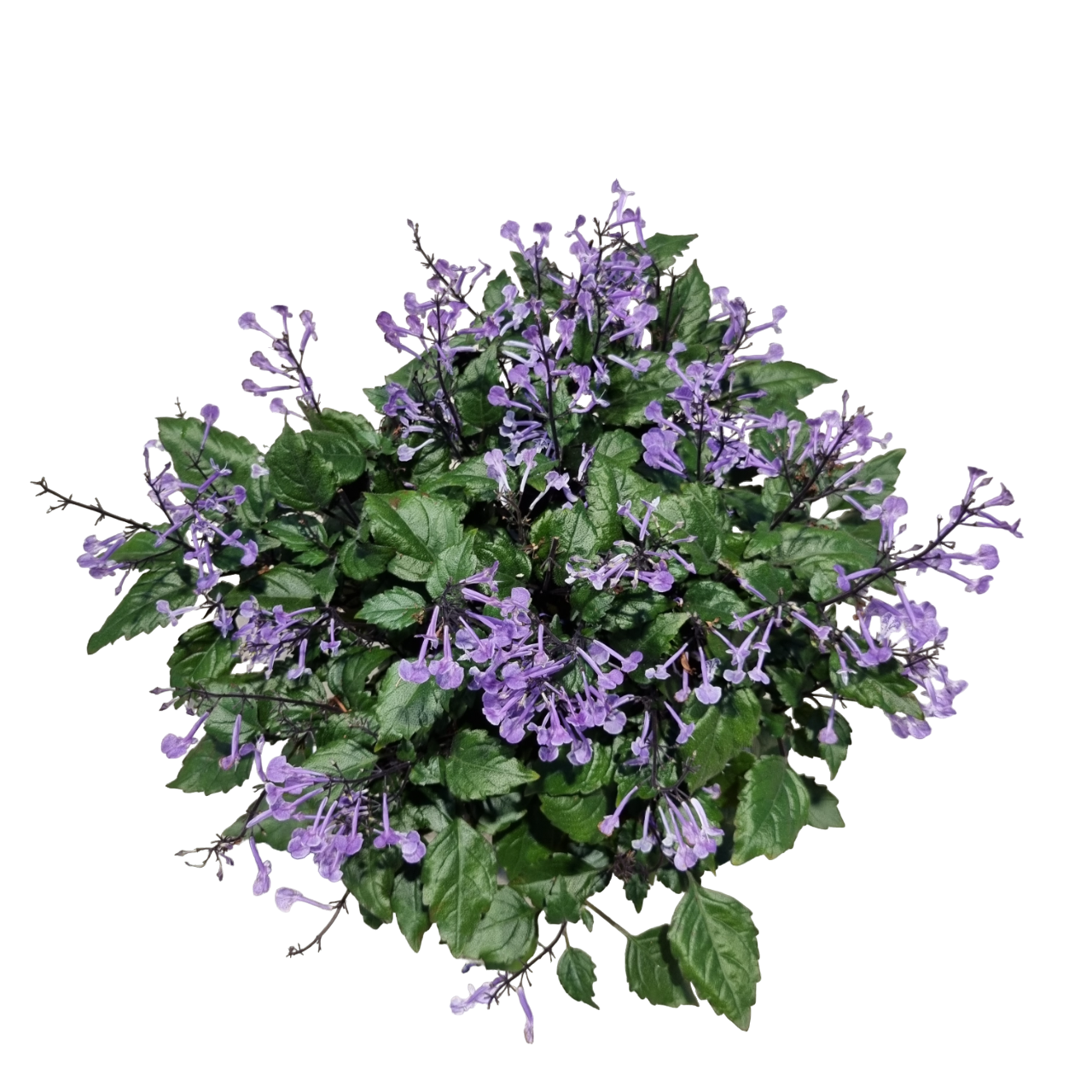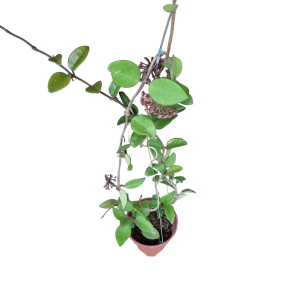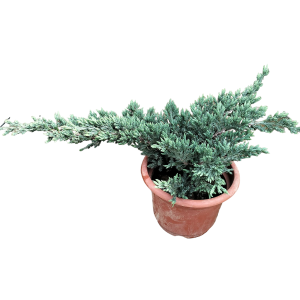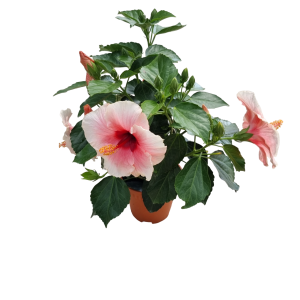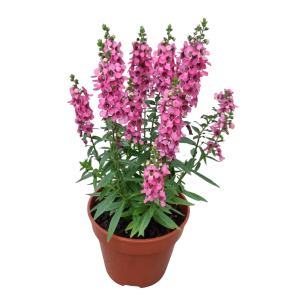Plectranthus ‘Mona Lavender’, commonly known as Mona Lavender or Ajuga, is a stunning hybrid perennial from the Lamiaceae family, renowned for its rich purple-lavender flowers and attractive foliage. Native to tropical regions of Africa, this low-growing plant has quickly become a favourite for ornamental gardens due to its vibrant blooms and unique, textured leaves. The foliage is deep green with a subtle purple tint, providing an excellent contrast to the striking lavender spikes that bloom profusely from late spring to autumn. Typically growing to a height of 30–40 cm with a spread of about 60 cm, Mona Lavender is perfect for ground cover, hanging baskets, or as a container plant. Its resilience and versatility make it an excellent choice for adding colour and texture to both sunny and partially shaded areas in the garden.
Plant Care Guide:
Light: Mona Lavender thrives in bright, indirect light but can tolerate partial shade. For best results, ensure it receives some direct morning or late afternoon sun to encourage blooming.
Watering: Water the plant regularly to keep the soil evenly moist. However, ensure good drainage to prevent waterlogging. Allow the top layer of soil to dry out slightly between waterings.
Soil: Prefers well-draining, fertile, and slightly acidic to neutral soil. A loamy or sandy mix with organic matter will support healthy growth and provide the right conditions for root development.
Humidity: Enjoys moderate to high humidity. If grown indoors, misting the leaves or placing the plant on a humidity tray can help maintain an ideal environment.
Temperature: Mona Lavender thrives in warm conditions, ideally between 18–26°C.
Fertilising: Apply a balanced, slow-release fertiliser to promote strong growth and consistent flowering. A fertiliser with equal proportions of nitrogen (N), phosphorus (P), and potassium (K) will encourage healthy foliage and vibrant blooms.
Pruning: Deadhead spent flowers regularly to encourage further blooming and prevent the plant from becoming leggy. Prune any damaged or overgrown stems to maintain a compact, bushy appearance.
Pests: While relatively pest-resistant, Mona Lavender may occasionally attract aphids or spider mites. Inspect the plant regularly for signs of pests and treat with insecticidal soap if necessary.Lighting: Bright Filtered Light
Watering: Water Moderately
Watering Frequency: When top layer of soil is dry
Aphids : Aphids are tiny, pear-shaped insects that range in color from green to yellow to black. They feed on the sap of plants using their sharp, piercing mouthparts and can cause stunted growth, curling leaves, and other damage. They reproduce quickly and can form large colonies, making them a common pest in gardens and greenhouses..
Spider mites: These pests can cause leaves to appear stippled or yellowed, and the plant may lose its leaves. Spider mites thrive in dry conditions, so increasing humidity levels and regularly misting the plant can help prevent them..
RYNAN Flowermate 240 NPK 14-14-14+TE: Every 3 Months.

